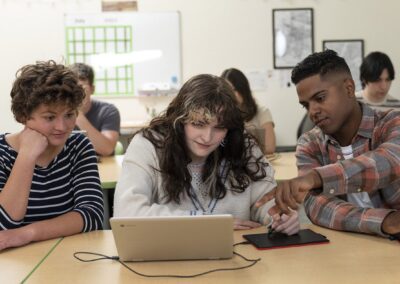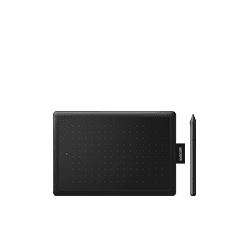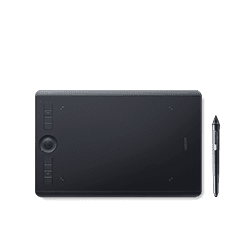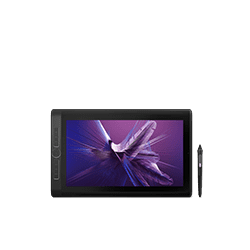Did I violently volunteer to interview Michael W. Streed aka “The SketchCop” when my colleague Doug Little mentioned he wanted me to meet a forensic artist? Yes, this is correct. Did I tell Michael W. Streed aka “The SketchCop” that I legitimately feel I could be a forensic investigator based on my years of experience watching Forensic Files? Yes, this is also correct.
This interview is my confession I mean tribute to my life-long obsession with all things true-crime related.

There were early signs of my obsession with crime shows and my Wacom colleagues enabled it. We even ran an online contest titled Wacom Files to see who could help us identify a fake suspect for a fake heist. We came up with a list of descriptors to help the aspiring forensic facial imaging experts come up with the best composite. The SketchCop himself was the judge.
Check out the fake “suspect” vs the winner piece.

Jeremy Inkshift as our fake suspect for #TheWacomFiles

Forensic sketch for #TheWacomFiles by David Penagos
Overall the contest was a blast and helped us forget we were in the middle of a pandemic. Plus, I got to meet Michael W. Streed aka “The SketchCop.” He’s the real deal and I want you to meet him, too. Check out the interview below.

1. We know this probably has a super long answer, but try your best to keep it short – how does one become a forensic facial imaging expert?
Becoming a successful forensic facial imaging expert takes tenacity and endurance. Convincing a skeptical investigator is difficult. But, with a bit of humility and lots of perseverance, you will increase your chance for success.
2. Were you in a different creative role before becoming a forensic facial imaging expert?
Before I became a forensic facial imaging expert; I was an aspiring animator. My career goal was to work for Disney. So, I spent much of my time drawing comic/cartoon figures rather than people.
3. When did you first find out you had a knack for making accurate portraits?
I never sketched a human face until I was an adult. It was always about cartoons. When I first learned that being a forensic artist was an option, I took a course from a famous LAPD police sketch artist. To be accepted into his course, he required we copy a test sketch he created of an old man’s portrait. After that, I became hooked on faces which led me to where I am today.
4. Could you walk us through the process of an interview with a witness to start a sketch?
Communication is key! It’s important for me to quickly gain the eyewitness’s trust. To begin, I spend a short period of time establishing rapport and building a bond. Much of my success is the ability to effectively communicate with the eyewitness. My art skills are secondary.
5. What’s the hardest part about drawing composites?
The hardest part is not turning the composite into your own sketch. You must be aware of, but mostly ignore the rules of classic facial proportion as it relates to individual facial features and how they relate to one another holistically. Composite sketches rarely, if ever, follow established rules.
6. Are female faces harder or easier to draw than males? Is there a difference in difficulty in gender?
Not really. I rarely sketch female criminals. Statistically, they don’t commit as many crimes as males. Even so, you should still know enough about female facial anatomy to be prepared.
7. What are some aids you use to help you create more accurate composites?
I use two different facial reference catalogs created by other forensic artists, including miscellaneous images I have curated and cataloged myself. This helps eyewitnesses who cannot articulate select facial features and those who are more visual than verbal.

8. What are your favorite reference books or materials to help you through your process?
My favorite resource is Gary Faigin’s book – Facial Expression. Although we try as forensic artists to neutralize a suspect’s facial expression, people rarely walk around ‘stone-faced’ Gary’s book helps artists understand facial anatomy and expression, particularly the role it plays in displaying emotion.
9. When did you start creating digital composites and what was your first Wacom tool?
My first pen tablet was a 1990’s era Wacom Graphire. My full conversion to digital composites came in 2015 when I acquired a Wacom Cintiq Companion for field use and a Wacom 22 HD for studio use. Both units are used exclusively for creating composite sketches and other forensic art projects.
10. What is your favorite program to sketch in and why?
Corel Painter 2021 is my ‘go-to’ software program for creating composite sketches. I enjoy its range and versatility. I use it in combination with Adobe Photoshop CC. Both programs have specific functions that complement one another and fit well into my workflow.
11. Is there an advantage to drawing digitally in your field?
I believe using digital tools and software make me a better artist. Wacom products and select software programs help increase my speed and expand my artistic range. I can customize express keys and create libraries of commonly sketched elements.
12. How long does it usually take to finish a composite?
I sketch quickly, so It typically takes me 60-90 minutes to complete a sketch. It’s my opinion that composite sketches are quick sketch character studies, like the process used by those who create movie monsters. The only difference is – the monsters I create are real!

Michael W. Streed aka “The SketchCop analyzing & comparing photos!
13. What is it like to see your drawings in comparison to a suspect?
When my sketch resembles a suspect, it’s the best feeling ever. After all these years, I’m still amazed. But it’s a team effort and I will always credit the eyewitness. Without them, my work would not be possible.
14. What are your top 3 tips for creating accurate portraits without a reference?
To create accurate portraits without reference, I recommend you:
• Be an active listener
• Have a good understanding of human anatomy
• Be a patient ‘people person’
15. What piece of advice would you give to someone interested in forensic facial imaging?
Your best opportunity for success is to become employed by a law enforcement agency. Although some of the most successful forensic artists began their careers as civilian, freelance artists; it would have been a road more easily traveled if they were already on the ‘team’ in another capacity.
###
We want to thank the wonderful Michael W. Streed for this interview and for all his support. Michael is a retired police sergeant and award-winning, internationally recognized, forensic facial imaging expert. Michael combines his extensive law enforcement experience and artistic skills to provide forensic facial imaging services to some of the largest, most diverse, police agencies in the United States, including the Baltimore Police Department and Los Angeles Police Departments. Check out his website and follow him on social media!
Register for our upgoming webinar with Michael W. Streed aka “The Sketchcop”









